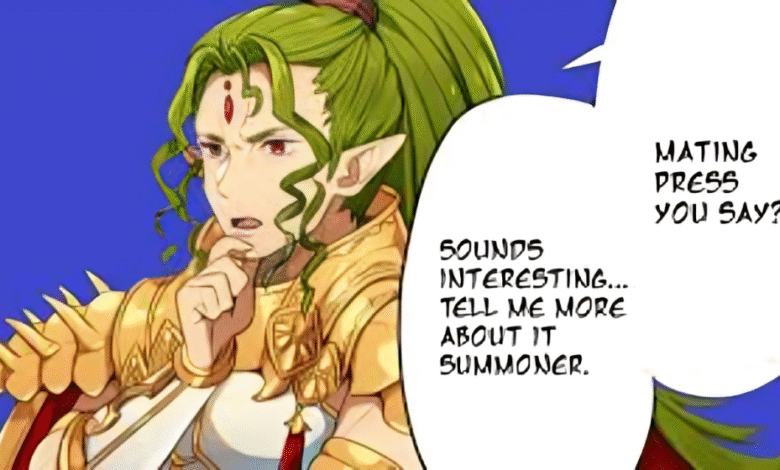Mating Press Understanding the Biological Reproductive Posture in Animal Behavior

In the field of zoology, the term mating press refers to a physical posture or position observed in some animal species during copulation. This position plays an important role in ensuring reproductive success, influencing factors like insemination efficiency, stability during mating, and compatibility between the mating partners. While popular culture sometimes distorts the term, in scientific and educational contexts, it has a clear, factual meaning tied to evolutionary biology.
This article will explore what the means in biology, its role in animal reproduction, evolutionary advantages, examples from different species, and the science behind mating postures. We will also examine the ethical aspects of studying animal mating behaviors, how it impacts conservation, and the importance of accurate terminology in scientific communication.
What Is the Mating Press in Zoology?
The mating press describes a physical posture during copulation where one animal applies sustained contact and positioning over its partner to maximize reproductive success. This position can be seen in various mammals, reptiles, amphibians, and even some insects.
In the animal kingdom, physical alignment during mating often determines the efficiency of gamete transfer. The posture provides:
- Stability during the act, especially in species where environmental factors (wind, uneven ground, or aquatic currents) could disrupt copulation.
- Optimal contact between reproductive organs, ensuring a higher chance of successful fertilization.
- Physical bonding that can also have behavioral functions, such as dominance display, pair bonding, or mate guarding.
Evolutionary Significance of the Mating Press
From an evolutionary perspective, behaviors that increase reproductive success tend to persist in a population. The mating press is one such adaptation. It offers several evolutionary advantages:
- Higher Fertilization Rates
By maintaining prolonged contact, the allows more efficient sperm transfer, which increases the likelihood of fertilization. - Mate Guarding
Some animals use the mating press as a way to prevent rival mates from accessing the partner immediately after copulation. - Sexual Selection
In certain species, females may prefer mates that can maintain a stable, seeing it as a sign of physical fitness or dominance. - Environmental Adaptation
In aquatic environments, the helps stabilize the pair against currents. On land, it prevents separation caused by uneven terrain or obstacles.
Examples of Mating Press in the Animal Kingdom
Mammals
In mammals like big cats, wolves, and certain primates, the posture is part of their natural reproductive behavior. The male typically positions himself over the female, using body weight to stabilize contact. This allows efficient gamete transfer and prevents interruptions from other competing males.
Reptiles
Many reptiles, such as tortoises and lizards, display variations of the mating press. The male will often hold the female in place using claws or body pressure to ensure alignment.
Amphibians
In frogs and toads, the mating press is comparable to the amplexus position, where the male clasps the female tightly. This posture not only ensures fertilization but also stimulates the female to release eggs.
Insects
Some insect species, like certain beetles, also adopt a mating press-like posture. The function is similar — stability and proper organ alignment — but it is adapted to their size and anatomy.
The Role of Anatomy in the Mating Press
An animal’s anatomy influences how the mating press is performed. For example:
- Size ratio between partners affects stability.
- Muscle strength helps maintain the posture.
- Reproductive organ placement determines the angle and pressure needed for successful gamete transfer.
Species with more flexible spines, stronger hind limbs, or specialized gripping structures can maintain the mating press for longer periods.
Mating Press and Conservation Efforts
Understanding mating postures like the is important in wildlife conservation, especially for endangered species. In captive breeding programs:
- Scientists observe mating behavior to ensure compatibility.
- Adjustments to the environment are made to facilitate natural postures.
- Behavioral knowledge helps improve artificial insemination timing.
For example, in giant panda breeding programs, keepers have learned that providing stable platforms can improve the success rate of natural mating because the position is easier to achieve.
Ethical Considerations in Studying Mating Press Behavior
Studying reproductive behavior in animals must be done ethically:
- Minimal interference in wild populations to avoid stress or disruption.
- Humane observation methods, such as remote cameras, to prevent human presence from altering behavior.
- Educational responsibility in presenting findings without sensationalizing the behavior.
By treating the mating press as a biological term rather than a pop-culture reference, scientists ensure that research maintains credibility and respect for the species studied.
Mating Press in Scientific Literature
Scientific journals often reference the posture under more specific terms depending on the species, such as “mounting position,” “amplexus,” or “copulatory posture.” However, the underlying function is the same — maintaining optimal alignment and contact during copulation.
Differences Between Mating Press and Other Reproductive Postures
In animal reproduction, the is just one of many possible positions. Other examples include:
- Side-by-Side Position – Seen in some fish and marine mammals.
- Face-to-Face Mating – Rare, but observed in some primates and insects.
- Aerial Mating – Common in certain birds and insects, such as dragonflies.
The mating press tends to be favored in species where prolonged, stable contact is crucial for fertilization.
Cultural and Pop-Culture Misinterpretations
Outside of biology, the term has been misused or given an explicit connotation in internet slang. While it may appear in memes or fictional contexts, these uses are unrelated to the scientific meaning. It’s important to distinguish between factual animal behavior and informal slang to maintain scientific accuracy.
Future Research on Mating Press Behavior
There is still much to learn about how different environments, genetic traits, and social dynamics influence behavior. Future studies could focus on:
- Impact of climate change on species that rely on stable mating postures.
- Role of sexual dimorphism in determining posture efficiency.
- Comparative anatomy studies to understand evolutionary adaptations.
Conclusion
The mating press is an important and natural reproductive posture in the animal kingdom, serving a critical role in ensuring successful fertilization. Far from being just a term, it reflects millions of years of evolutionary adaptation. Understanding this behavior not only deepens our knowledge of biology but also aids in conservation and species survival.




